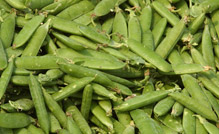
Systems Thinking is based on fundamental principles which are applicable across a very wide range of experience and circumstances, no matter when or where they occur. This case study dates from 1965, and is an example of a situation that still occurs frequently.
The company concerned was the leader in its market in the food canning industry in the UK and belonged to a large parent group. Its main product (a canned vegetable) has some 65% of this market, a share that had been relatively stable since before the war.
Investment
Believing it would continue to hold this position, the company persuaded the group board to invest several million pounds sterling in erecting a new automated factory, which, however, based it economies on a built-in rigidity. It was set up exclusively for the long runs expected from the traditional market.
The character of the environment, however, began to change while the factory was being built. A number of small canning firms appeared, not dealing with the product, nor indeed with others in the company's range, but with imported fruits. These firms arose because the last of the post-war controls had been removed from steel strip and tin, and cheaper cans could now be obtained in any numbers - while at the same time a larger market was developing in imported fruits.
Quick freezing introduction
This trade being seasonal, the firms were anxious to find a way of using their machinery and retaining their labour in winter. They became able to do so through a curious side-effect of the development of quick frozen foods, when the company's staple was produced by others in this form.
The quick freezing process demanded great constancy at the growing end. It was not possible to control this beyond a certain point, so that quite large crops unsuitable for quick freezing but suitable for canning became available, originally from another country (the United States) where a large market for quick frozen foods had been established. These surplus crops had been sold at a very low price for animal feed. They were now imported by the small canners (at a better but still comparatively low price), and additional cheap supplies soon began to be procurable from developing countries.
Shift in preference
Before the introduction of the quick-freezing form, the company's own canned product - whose raw material had been specially grown at additional cost - had been the premier brand, superior to other varieties and charged at a high price. But its position in the product spectrum now changed. With the increasing affluence of society, more people were able to afford the quick-frozen form. Moreover, there was competition from a great many other vegetable products which could substitute for the staple, and people preferred this greater variety.
The advantage of being the premier line among canned forms diminished, and demand increased both for the not-so-expensive varieties among them and the quick frozen forms. At the same time, major changes were taking place in retailing; supermarkets were developing, and more and more large grocery chains were coming into existence.
Emphasis on 'own label'
These establishments wanted to sell certain types of goods under their own house names, and began to place bulk orders with the small canners for their own varieties of the company's staple that fell within the class. As the small canners provided an extremely cheap article (having no marketing expenses and a cheaper raw material), they could undercut the manufacturers branded product, and within three years they captured over 50 percent of the market. Previously, retailers' varieties had accounted for less than 1 per cent.
The new automatic factory could not be adapted to the new situation until alternative product with big sales volume could be developed, and the scale of research and development, based on the type of market analysis required to identify these, was beyond the scope of existing resources of the company either in people or in funds.
Conclusion
The changed texture of the environment was not recognised by an able but traditional management until it was too late. They failed entirely to appreciate that a number of outside events were becoming connected with each other in a way that was leading up to irreversible general change.
Their first reaction was to make a Herculean effort to defend the traditional product, then the board split on wither or not to make an entry into the cheaper unbranded market in a supplier role.
Group HQ now felt they had no option but to step in, and many upheavals and changes in management took place until a "redefinition of mission" was agreed, and slowly and painfully the company re-emerged with a very much altered product mix and something of a new identity.




Rate and Review
Rate this article
Review this article
Log into OpenLearn to leave reviews and join in the conversation.
Article reviews